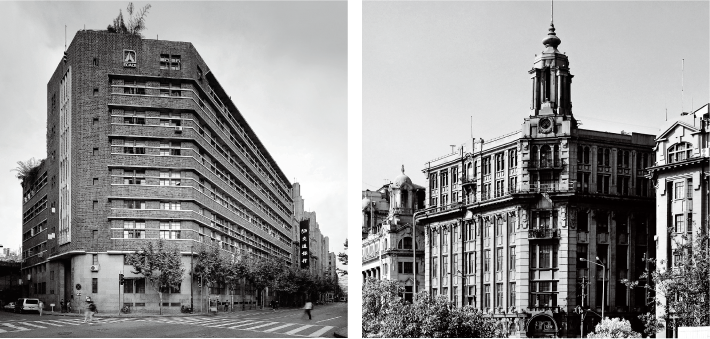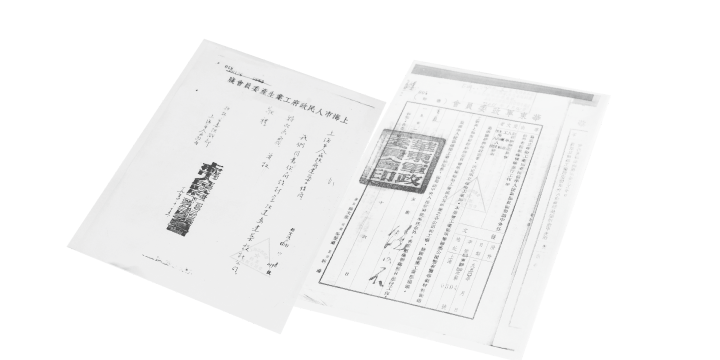During the period of 1920s-1940s, industry and commerce run by foreign capital and Chinese national capital in Shanghai made great progress. More and more architectural design institutions were located in Shanghai, among which, foreign institutions were Palmer and Turner, Lester, Johnson & Morriss, Hudec and Hazzard & Phillips, etc. Later, a few architecture students who had been studying in Western countries came back home and opened their own firms in Shanghai one after another, working as local designers competitive as that of foreign architects in Shanghai. Famous firms of such kind are Zhuang Jun Architects, the Allied Architects, Fan Wenzhao Architects and Doon Da Yu Architects. During that period, many landmarks were constructed in Shanghai, e.g., the “International Architecture Exhibition Group” at the Bund, garden houses of various styles and modern lane houses in the Xuhui and Luwan Districts. These buildings featured diverse forms and different styles.

East China Architectural Design & Research Institute, No.151 Hankou Road
Former address of Shanghai Institute of Architectural Design & Research, No.17 Guangdong Road
Since 1949, municipal works of Shanghai were all designed by the design departments affiliated to the Shanghai Government. In 1952, Shanghai Architectural Design Company (preparatory) was established on the basis of Design Group of Shanghai Construction Engineering Company; in May, it was amalgamated with departments such as Design Group of Construction Engineering Company of East China Industry Department and the Construction Design Company of East China Industry Department was formed. In 1954, it was renamed as East China Industrial Architectural Design Institute (hereinafter referred to as “the East China Institute”). Later between 1953 and 1957, to meet the demands of national key construction projects, the national government and related professional departments in East China established some professional survey and design institutions in Shanghai. In 1953, Design Department of Production Technology Division of Shanghai Construction Engineering Bureau, a small state-owned studio sitting in Hamilton Building at the Bund, was established and Mr. Liu Huizhong was Director. It was the first municipal design institute in Shanghai after the foundation of PRC, also the predecessor of Shanghai Civil Architectural Design Institute (hereinafter referred to as “the Shanghai Institute”). The Design Department was moved to the South Building of Peace Hotel at the Bund not long later; due to a great increment in staff caused by public-private partnership, then it was moved to No.17 Guangdong Road at the Bund (the original No. 3 at the Bund) permanently.
Around 1952, East China Architectural Design & Research Institute and Shanghai Institute of Architectural Design & Research (hereinafter referred to as “the ‘Two Institutes’”) under preparation were both fully supported by government. Party members graduated from civil engineering majors and architectural designers graduated from universities and colleges were gathered; office buildings were allocated for the companies to expand business; financial support was given to the companies, and designers were paid well. Departments such as general plan, education, residence, medical health, factory, civil and electromechanical design studios and soil survey team (later renamed as survey room), planning room, technical room and material laboratory were set; responsibility system and technical review procedure were established and parallel operation was promoted by the Joint Committee summoned. In addition, means such as unified design standard, unified design drawing specification and unified design review were laid down.

The principle of “Applicable, economical and good-looking” put forward by the central government on the design conference held in July 1952 was implemented in the design philosophy. Today, cities are being expanded and houses built in all corners of China. Areas plagiarize and imitate one another; developers pursue exotic, luxury appearance, neglecting functions of buildings and thinking nothing about residents by “cloning” designs. These phenomena that lack specific character and innovation are still seen.
Quoted from Collected Works of Jin Oubu by Mr. Jin Oubu